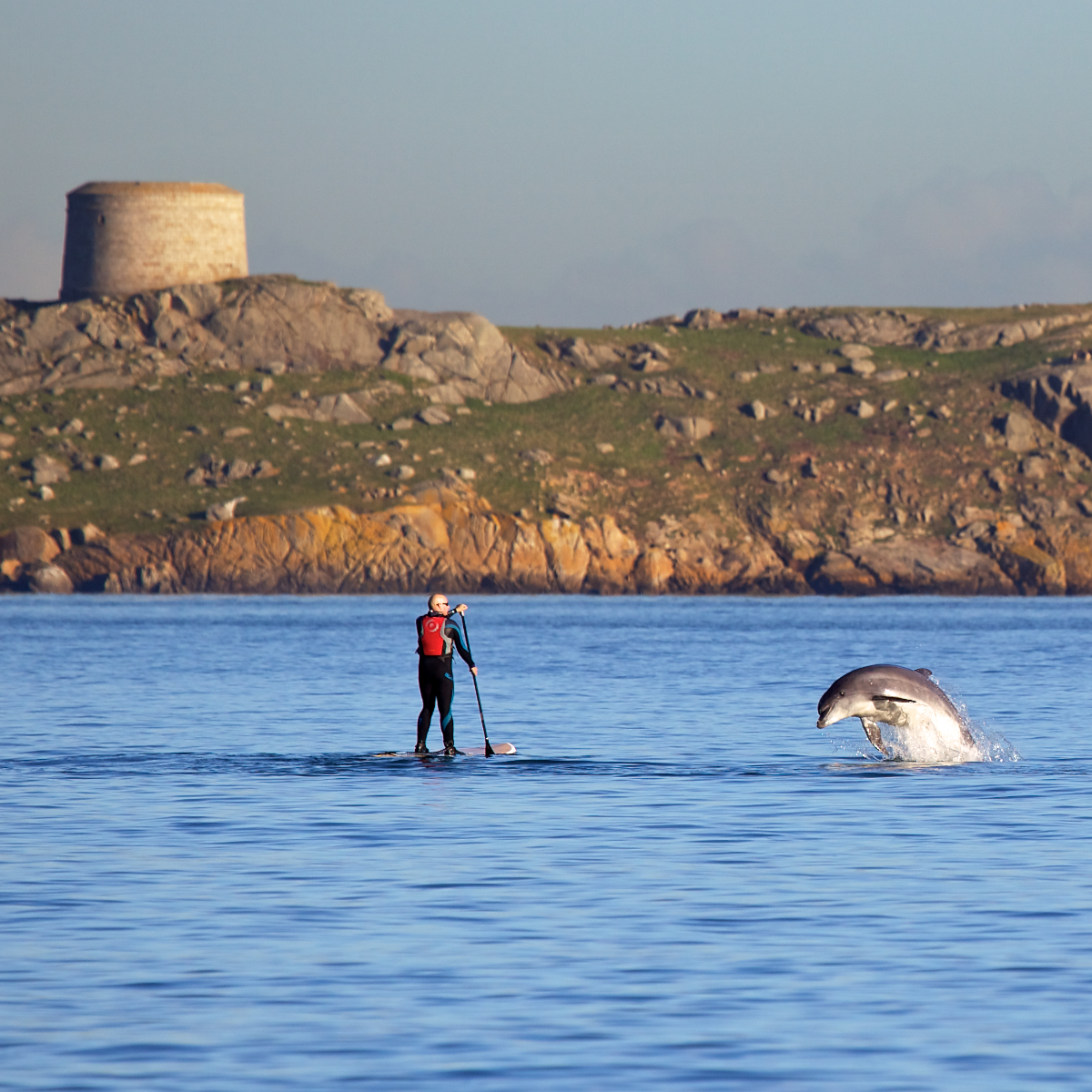Bottlenose dolphin
 | image = Tursiops truncatus 01.jpg
| image_caption = Bottlenose dolphin surfing in the wake of a research boat
| image2 = Bottlenose dolphin size.svg
| image2_caption = Size compared to an average human
| status = LC
| status_system = IUCN3.1
| status_ref =
| taxon = Tursiops
| authority = Gervais, 1855
| type_species = ''Delphinus truncatus''
| type_species_authority = Montagu, 1821
| subdivision_ranks = Species
| subdivision =
| range_map = Cypron-Range Tursiops truncatus.svg
| range_map_caption = Bottlenose dolphin range (in blue)
}}
| image = Tursiops truncatus 01.jpg
| image_caption = Bottlenose dolphin surfing in the wake of a research boat
| image2 = Bottlenose dolphin size.svg
| image2_caption = Size compared to an average human
| status = LC
| status_system = IUCN3.1
| status_ref =
| taxon = Tursiops
| authority = Gervais, 1855
| type_species = ''Delphinus truncatus''
| type_species_authority = Montagu, 1821
| subdivision_ranks = Species
| subdivision =
| range_map = Cypron-Range Tursiops truncatus.svg
| range_map_caption = Bottlenose dolphin range (in blue)
}}The bottlenose dolphin is a toothed whale in the genus ''Tursiops''. They are common, cosmopolitan members of the family Delphinidae, the family of oceanic dolphins. Molecular studies show the genus contains three species: the common bottlenose dolphin (''Tursiops truncatus''), the Indo-Pacific bottlenose dolphin (''Tursiops aduncus''), and Tamanend's bottlenose dolphin (''Tursiops erebennus''). Others, like the Burrunan dolphin (''Tursiops (aduncus) australis''), may be alternately considered their own species or be subspecies of ''T. aduncus''. Bottlenose dolphins inhabit warm and temperate seas worldwide, being found everywhere except for the Arctic and Antarctic Circle regions. Their name derives from the Latin ''tursio'' (dolphin) and ''truncatus'' for the truncated teeth (the type specimen was old and had worn down teeth; this is not a typical characteristic of most members of the species).
Numerous investigations of bottlenose dolphin intelligence have been conducted, examining mimicry, use of artificial language, object categorization, and self-recognition. They can use tools (sponging; using marine sponges to forage for food sources they normally could not access) and transmit cultural knowledge from generation to generation, and their considerable intelligence has driven interaction with humans. Bottlenose dolphins gained popularity from aquarium shows and television programs such as ''Flipper''. They have also been trained by militaries to locate sea mines or detect and mark enemy divers. In some areas, they cooperate with local fishermen by driving fish into their nets and eating the fish that escape. Some encounters with humans are harmful to the dolphins: people hunt them for food, and dolphins are killed inadvertently as a bycatch of tuna fishing and by getting caught in crab traps.
Bottlenose dolphins have the third largest encephalization levels of any mammal on Earth (humans have the largest, followed by Northern Right whale dolphins), sharing close ratios with those of humans and other cetaceans, while being twice as high of other great apes. This more than likely contributes to their high intelligence. Provided by Wikipedia
-
1
-
2
-
3by Bland, Rhian, Methion, Séverine, Sharp, Stuart P., Díaz López, BrunoContributors: “...Bottlenose Dolphin Research Institute...”
Published in Marine Pollution Bulletin (2023)
Get access
Get access
Get access
Article in Journal/Newspaper